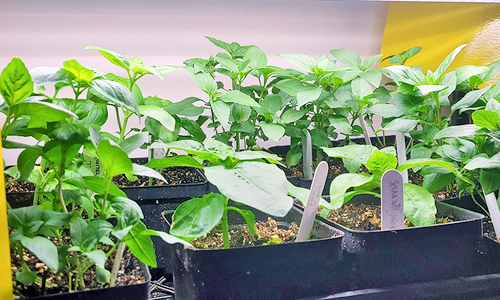Talking Plants
Jillian Patrie | University of Minnesota Yard and Garden Extension
January is a great time to grow fresh herbs indoors for use in cooking or just to bring some green into your home, during these cold winter months. You don’t need anything too elaborate to grow herbs successfully, just light, warmth and soil. Here are a few tips for starting your fresh herb supply.
A bright light source (grow lights or a full spectrum light bulb, 12-16 hours of light is recommended for herbs and leafy greens).
Containers/pots (bedding cell packs, plastic pots or ceramic).
A room temperature space, and ability to keep the soil temperature around 70 degrees (do not keep herbs in the window during the winter months, as the nighttime temperature is too cold and sunny winter days can be too warm. Heat mats are a perfect way to maintain a consistent soil temperature for good germination and root growth).
A good seed starter or potting mix (look for an all-purpose potting mix or seed starting mix).
Seeds! Garden centers and supply stores have their 2025 seed collection out. Make sure to store your seeds in a dry and dark place when you are not using them. Seeds can get old, and the germination rate will decrease as the years pass. Generally, seeds that are 3 years old or newer will have a good germination rate.
Wait until herbs are big enough before you start to harvest. Herbs can take 6 weeks or more to be big enough to harvest. This will depend on the type of herb you are growing. Cilantro, basil and parsley grow quickly, and you may be able to harvest in about 4 weeks. Rosemary, thyme and oregano are slower and will require more time before harvesting.
Have you tried cat grass? It is a fun and easy oat grass that cats like to munch on, instead of your houseplants. It is also good for dogs and rabbits too!
****The back of the seed packet will provide you with all the information you will need to get those seeds on their way! For more information about starting and growing herbs indoors visit https://extension.umn.edu/vegetables/growing-herbs.
For questions about this article or local assistance please contact Clay County Extension Horticulture Educator, Jill Patrie at 218-299-7338 or by email patri350@umn.edu.


